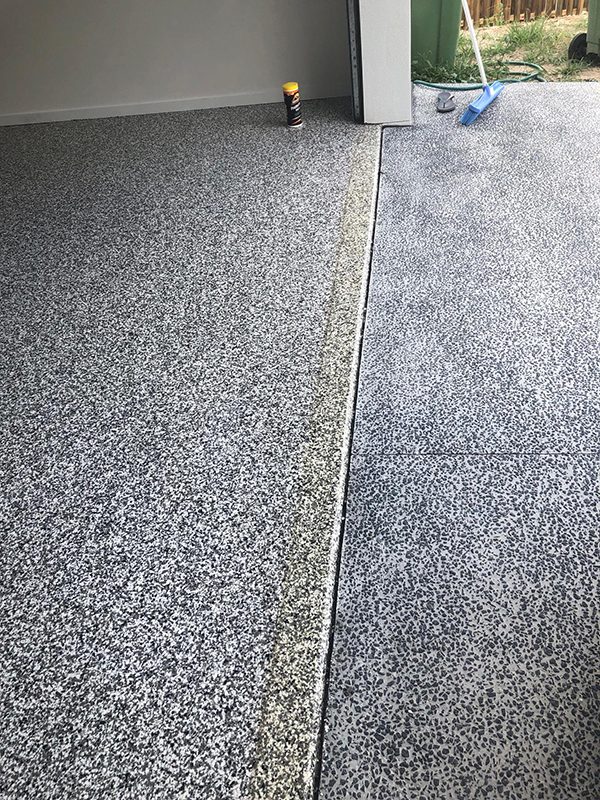Home › Blog › Resin flooring weathering
Resin flooring suppliers and installers answer most questions from floor owners with absolute confidence, but there’s one many of us dread:
“What about yellowing?”
It can be a tricky topic to deal with, however it becomes so much easier when we accept one unavoidable fact – all coatings will
weather.
After 20 years of formulating and manufacturing, this is something we can say with certainty.
How they weather, how much they weather, and how fast it happens, is a much harder thing to predict!
Rather than feeling the pressure to perform miracles and somehow stop the natural wear and tear all types of floors experience, our job as
resin flooring professionals is to manage it the best we can.
Here’s an approach that can help:
Once you understand exposure and product options, the next thing to do is identify potential contrast lines. Resin flooring cops a bit of a
bad rap because many floors have sharp lines created by objects that leave one side weathered and the other protected. The nosing of a
garage where the door shuts is the most common example, however it could be a pot plant or any other movable object.
The aim is to avoid these lines as much as possible because they’ll exaggerate even the slightest weathering. While the right product and
colours help, you’re better off eliminating them completely if possible.

The final step is to discuss the findings and options with all parties involved.
It’s one that not many of us in the flooring industry like to take because we fear it will be seen as a product flaw. We’ve got to realise,
however, weathering is NOT just a resin flooring problem. Look at the warranty for just about
any product – a new timber floor, car, or whatever – and you’ll find weathering and discolouration are defined as natural wear and tear
that isn’t covered anywhere.

The fact is, no one can stop weathering and we only set ourselves up for a fall if we say we can. Rather than sweep it under the rug or feel
some sort of guilt, discuss the issues together and let the decision makers choose what’s best for them.
Take care and keep smiling,